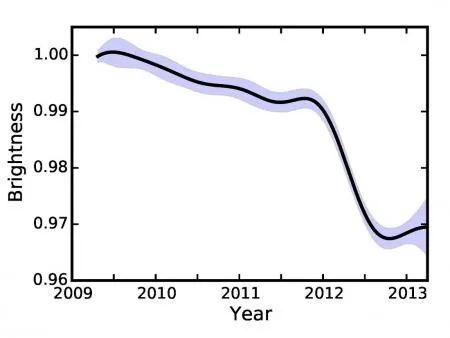Deep in the constellation Cygnus, a star known as Tabby’s star (or KIC 8462852 to give it its formal name) has baffled astronomers since strange light fluctuations were discovered using data from the Kepler Space Telescope. Theories for the star’s regular dips in brightness range from comets passing in front of it to giant alien megastructures, but a new study from astronomers in the USA have cast a new light (excusing the pun) on the matter, which deepens the mystery even further.
By studying Kepler data, Carnegie Observatories’ Josh Simon and Caltech’s Ben Montet discovered that as well as the frequent dips in brightness, the star was also gradually fading over the course of four years. To compound the mystery even further, in the last year of observations, the brightness dipped an unprecedented two per cent, a dramatic drop unseen in any other observations from Kepler.
“This star was already completely unique because of its sporadic dimming episodes,” says Simon. “But now we see that it has other features that are just as strange, both slowly dimming for almost three years and then suddenly getting fainter much more rapidly.”

First discovered in 1890, Tabby’s star is claimed to have dimmed by 14 per cent up to 1989, but the new observations account for a 3 per cent dip in just four years. Regular dips in brightness can be expected when planets, gas or other celestial objects pass in front of a star, but the regular and erratic pattern that passes KIC 8462852 continues to leave astronomers scratching their heads, running short of realistic answers. The new observations will only shroud the star in more mystery, but the pair reckons the best explanation for the dramatic two per cent dip could be the breakup of a planet or comet causing a huge amount of dust and debris in the star’s system. Neat as this may be, it still doesn’t explain the gradual decline in brightness over the last 120 years.
“It’s a big challenge to come up with a good explanation for a star doing three different things that have never been seen before,” says Montet. “But these observations will provide an important clue to solving the mystery of KIC 8462852.”
Follow Science Focus onTwitter,Facebook, Instagramand Flipboard

